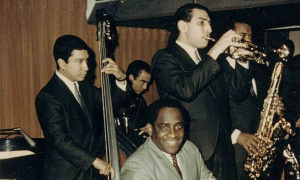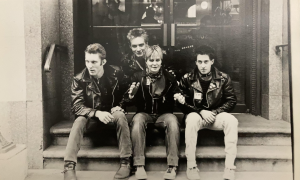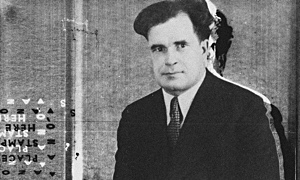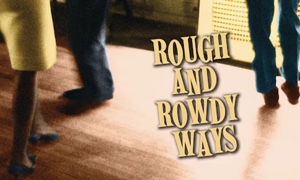Home » Jazz Articles » Hardly Strictly Jazz » Marty Sheller: The Name Behind The Sound You All Know, Part 1
Marty Sheller: The Name Behind The Sound You All Know, Part 1

We were too Latin for the jazz clubs, and too jazz for the Latin clubs. But it was a helluva band and the audience caught on to what we were doing.
—Marty Sheller
If all Marty Sheller, now 81, had done was to play the famous trumpet solo on Mongo Santamaria's "Watermelon Man," he would be of note. Maybe some would check out Sabu Martinez' hard bop-meets-Latin 1960 Alegre Records tour de force LP Jazz Espagniole (reissued on the Vampi Soul label out of Spain), where Marty and alto saxophonist/brother-in-arms Bobby Porcelli lead the charge as if to tell Horace Silver or Art Blakey to they're available for frontline work. This is prime jazz playing that moves between fantastic Latin grooves and benchmark hard bop. Marty Sheller, born 1940 and raised in Newark, was very much of his time and place. And to hear his recollections, he indeed seemed bound for the New York jazz scene. But instead, he became one of the chief architects of Latin Soul. And then some.
"My first influences were West Coast musicians, because it was a little easier for me to understand—Chet Baker, Maynard Ferguson in Stan Kenton's band and all. I grew up in Newark, and I knew about Wayne Shorter, but he was older than I was. There were other musicians around who were closer to my age. Larry Young's mother had sectioned off a little area in the house where he had an organ set up. A couple of times I went to his house with some other musicians from my high school, and he had some jam sessions over there. Oh boy, was he something else! And I became friendly with Woody Shaw. He was a few years younger than me, and we didn't go to the same high school, but we knew of each other. One night we met in person in downtown Newark at a club. The band was Wayne Shorter's, with Grachan Moncur III on trombone. During one of the breaks, Woody and I were singing Lee Morgan solos together, because we both loved Lee Morgan.
"I recall that a friend—a drummer—he and I went down to the Village Vanguard to hear the Chico Hamilton group. It was so noisy and full of smoke in there that after the first set, I was so bugged that we walked out. I knew Cafe Bohemia was nearby, so we walked over, and it was my luck that when I looked at the marquee, it said 'Battle of the Bands: The Drummers.' It was Art Blakey's quintet and Max Roach's quintet. We caught the last number of Max Roach's quintet—'Valse Hot'—with Kenny Dorham and Sonny Rollins and that absolutely knocked me out. Blakey's group came on—that was when he had Jackie McLean and Bill Hardman. I wrote down the names of all the musicians and I said 'I've got to check out these guys.' I was already aware of Miles, and now I was listening to Kenny Dorham, Donald Byrd and Art Farmer.
"I started Columbia College in September of 1957 and by the summer of '58, I met Myron Schwartzman, a hell of a jazz pianist. Right before school was over for that semester, he said 'There's a saxophonist in one of my classes. A friend of his is a drummer and they got a gig up in the Catskills. They need a pianist and a trumpet player.' The alto player was Bobby Porcelli. We spent that summer playing in a little hotel for mainly older Jewish people. The first one of us who woke up in the morning would put on those records made by the Red Garland Trio with John Coltrane and Donald Byrd. Bobby would transcribe the songs, and we would practice those tunes."
By the end of that summer, Marty had surrendered to music. For those who want to see what that meant in its most practical terms, I refer you to the opening of the 1963 film Love With The Proper Stranger, starring Steve McQueen as a scuffling trumpet player. It opens inside the Roseland Ballroom, with a musicians' union cattle call in progress, which Marty says presents a fairly accurate rendition of the experience.
"When you walked in, on the left side before you got into the dance floor was where the jazz musicians would hang out, and that's where I hung out. The right side was where the Latin musicians would hang out, and in the middle, the club date musicians, who were by far the largest group. Every Monday, Wednesday, and Friday, we were down there in the afternoon to get gigs. At that time, the Latin bands all used trumpet players, and since I could read music well and I knew how to solo, I wound up playing a few gigs with some Latin bands, and that's how I got involved."
It didn't take long for him to pop up on Mongo Santamaria's radar. Mongo's earthshaking Latin jazz group then included a young Chick Corea, who Marty had met at Columbia College. The following months were marked by personnel changes—with Chick was on his way out of the band, Rodgers Grant in harness to replace him in Autumn '62, just as Marty was on his way in. Sun Ra sideman Pat Patrick was at that time the combo's alto saxophonist and music director. Bobby Capers, who had been playing tenor in the band, moved to alto, Hubert Laws came in on flue and tenor in 1963, and Marty became music director. Mongo and Marty would work closely until the great conguero's passing in '03.
In that brief time window between Corea and Grant, a substitute pianist was needed for a few gigs. There was a new guy in town looking for work—not only a formidable pianist, but a guy with the right composition at the right time.
"Chick had given notice way in advance, but at the last minute somehow Mongo still needed a pianist. They were in the office of Symphony Sid, and Donald Byrd was there also. When Donald heard that Mongo needed a pianist, he said, 'I know a guy. He's a great pianist, reads well, but I don't think he's ever played in a Latin band. But if you need a pianist, he can do the job.' It was, of course, Herbie Hancock (laughs). It was a three day gig—Friday, Saturday and Sunday—and Donald came to the club and told Herbie, 'Play that song 'Watermelon Man' for Mongo. So he started playing the vamp and the melody, and Mongo liked it, and asked him 'Would you please bring the music? We're starting rehearsal with a couple of new guys on Monday,' so he brought it down, we went over 'Watermelon Man,' and it sounded pretty good. We rehearsed that whole week, then did a gig out in Brooklyn at a place called the Coronet Club, and the people loved it. So [Mongo] got Orrin Keepnews—the A&R man at Riverside Records— to come out on Thanksgiving Night of 1962 (laughs) and listen. He said 'Well, we don't usually record singles. We're an album company, but the song went over so good that we'll put it on our subsidiary, Battle Records.'
"As a matter of fact, when it became a hit, Mongo asked Herbie 'Hey, can you bring in another funky song like that? So he brought 'Cantaloupe Island' (laughs). We ran it down a couple of times, but Mongo felt that it wasn't anything special so we never recorded it and never played it after that."
That classic "Watermelon Man"—era Mongo combo was one of the groups that ushered in boogaloo. While the leader's name was in the biggest letters, sidemen were not relegated to anonymity. Also, there seems to have been a real feeling of comradeship in the band, with members not only playing together, but also in the case of one of the band's hits, "Yeah Yeah," co-composing.
"Mongo did not have what we call 'leaderitis.' As long as the music was good, he was just another participant. He wanted the guys in the band to compose, and he recorded our compositions, and at rehearsals, if someone had an idea, we'd try it. Plus we were working six nights a week constantly, so by the time you get in to do the recording, the band has everything down and everything sounds right.
"'Yeah Yeah' started off with Rogers playing the piano vamp, and Pat came up with the melody at the beginning, so he wrote that out to the horns. Then Rogers came out with that beautiful middle part with the pianist playing those nice chords. Rogers was the best composer for that band. We had been friendly before joining Mongo's band, and he wrote some of the funkiest hippest songs in the book as far as I'm concerned. Only in New York would you find guys that were that well versed in jazz as well as authentic Latin music. And Pat was a terrific composer as well. He wrote some beautiful music and he played great."
Santamaria's commercial success on Riverside/Battle was enough that a bigger label—Columbia Records—signed the group. This was during the era when the notoriously square Mitch Miller headed their Artists & Repertoire department. Miller assigned Robert Mersey to produce. It wasn't the first time Mersey had a formidable artist whose magic he couldn't quite grasp. His work with Aretha Franklin didn't light up the marketplace, and his relationship with Dion was complex, despite having produced a few hits, all of Dion's choosing. The Mersey approach was better suited to pop singers like Barbra Streisand, Patti Page, and Johnny Mathis. And so, Mongo's debut LP for the label, Hey! Let's Party, was a musical bunt from a grand slam combo.
"Yeah, I'll tell you what happened there. At Riverside, Orrin took the attitude of 'Mongo knows what he wants to do, and when it comes time to record, we'll just go in and record.' There was no guidance as far as what to play or that kind of thing. When Mongo signed with Columbia, my attitude was 'This is going to be great,' but...
"Robert Mersey was a great arranger, and he jumped at the opportunity to produce Mongo's band. But he chose the songs and did all the arrangements except one, and it didn't turn out that well. I mean, he took a song like 'In The Mood' and did it cha-cha style. We rehearsed it. We went 'oh man (groans),' but Mongo was in a position ... Well a little inside story—all the years that he had his band, he would get paid and he would give the guys cash. It wound up that he owed the government a lot of money in taxes, so when he signed with Columbia, they gave him enough to take care of his tax thing so he felt kind of obligated."
Mersey stuck around until 1967. After Party, he loosened his grip, and the recordings picked up steam, especially El Bravo, which shows how intense the band had become. Marty's trumpet playing from the first few bars combines the rhythmic hallmarks of Latin with the full fire of sixties hard bop. The bandmembers' compositions (except Marty, who has none on this record) are the bulk of the program, and the influential Mongo Santamaria Latin soul style comes across fully developed. Unfortunately, as the group hit its stride at Columbia, Marty's problems with his embouchure forced him to give up the trumpet. He kept his post as the band's musical director and chief arranger, but stopped playing in 1967. Given the high standard of musicianship the records show, this might make him the Nolan Ryan of trumpet.
"I had learned to play incorrectly. I was putting too much pressure against the chops. When I was young, strong and invincible, the recordings sounded pretty good. But as time went by, it became more and more difficult to play and I couldn't get the sound I wanted. By the end of the night, I couldn't play in the higher register at all, so it became very very frustrating. It really broke my heart to put the horn down. The thought of not being able to play in front of a crowd and get that feedback, especially when the band is swinging... It took a while to resign myself to that, but it was something that I had to do because I couldn't continue. I told Mongo, 'I can't continue.' And Mongo asked 'Do you know another trumpet player who could do the job?'and I said Ray Maldonado would be perfect for the band so we called up Ray and he jumped on it. Actually, right before Ray came on, I called Woody Shaw to sub for me, and... talk about superhuman— to have him, Hubert Laws and Mongo in the same band! You should have heard Woody on 'Afro Blue!'"
The blow was somewhat softened by his staying with Mongo's band, still integral although non-performing. He would be Mongo's interlocutor 'til death did they part.
"I had already become musical director when Pat left. I would rehearse the band, and when it came time to go into record, everything was really tight, so whenever the producers would want to talk about what was going to be on the recording, I was the one that they would speak to. Mongo would be there also and be part of the conversation."
While the decision to step away from the horn was surely painful, Marty's most influential days were coming up, and soon. We'll get to all that in Part 2.
Tags
Hardly Strictly Jazz
Marty Sheller
skip heller
Greg Leisz
Mongo Santamaria
Sabu Martinez
Bobby Porcelli
Horace Silver
Art Blakey
Chet Baker
Maynard Ferguson
Kenton
Wayne Shorter
Larry Young
Woody Shaw
Grachan Moncur III
lee morgan
Chico Hamilton
Max Roach
Kenny Dorham
Sonny Rollins
Jackie McLean
Bill Hardman
Miles
Donald Byrd
Art Farmer
Myron Schwartzman
Red Garland
John Coltrane
Chick Corea
Rodgers Grant
Sun Ra
Pat Patrick
Hubert Laws
Symphony Sid
Herbie Hancock
orrin keepnews
Mitch Miller
Robert Mersey
Aretha Franklin
Barbra Streisand
Patti Page
Johnny Mathis
Ray Maldonado
PREVIOUS / NEXT
Support All About Jazz
 All About Jazz has been a pillar of jazz since 1995, championing it as an art form and, more importantly, supporting the musicians who make it. Our enduring commitment has made "AAJ" one of the most culturally important websites of its kind, read by hundreds of thousands of fans, musicians and industry figures every month.
All About Jazz has been a pillar of jazz since 1995, championing it as an art form and, more importantly, supporting the musicians who make it. Our enduring commitment has made "AAJ" one of the most culturally important websites of its kind, read by hundreds of thousands of fans, musicians and industry figures every month.





















